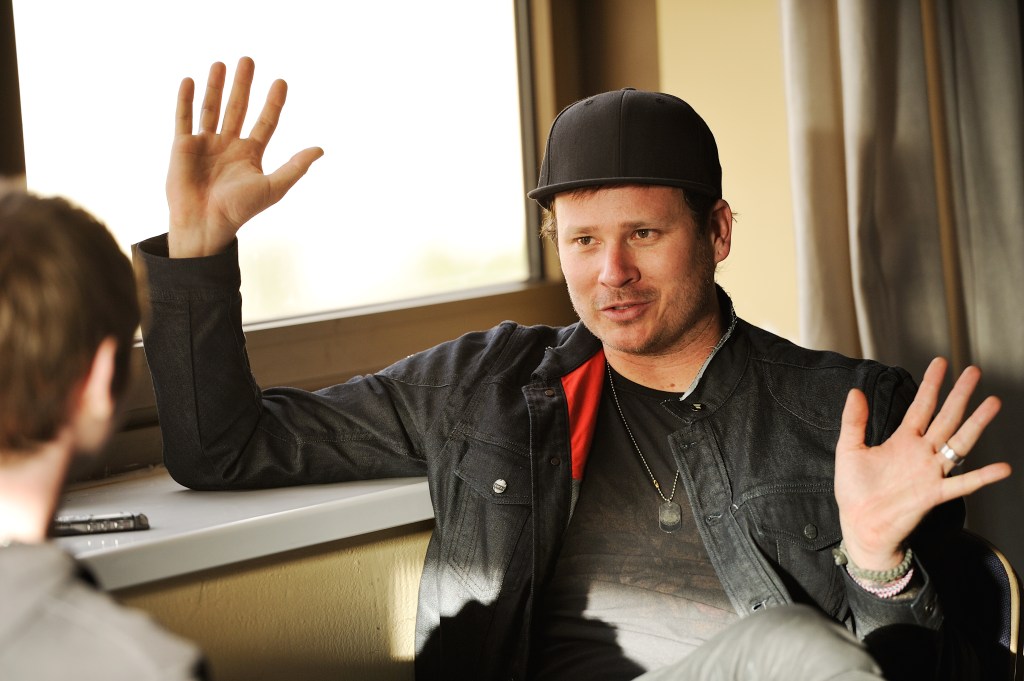The UFO researcher who sold bits of ‘exotic’ metal to former Blink-182 singer turned UFO mogul Tom DeLonge for $35,000 explained to Motherboard why she parted with the artifact and what will happen to it now.
In 2017, the New York Times ran an article about a secret Pentagon UFO program known as the “Advanced Aerospace Threat Identification Program.” The article noted that aerospace billionaire Robert Bigelow, whose interest in UFOs is no secret, modified buildings to house “metal alloys and other materials…that [allegedly] had been recovered from unidentified aerial phenomena.” Earlier this year, DeLonge’s UFO outfit To The Stars Academy paid $35,000 for ‘exotic’ metamaterials according to its September SEC filings.
Videos by VICE
TTSA bought the metals from Linda Moulton Howe, a UFO researcher, in order to “conduct rigorous scientific evaluations to determine its function and possible applications,” the company said in a press release in July. In October, the company entered into a partnership with the US Army to research the metal and also study some pretty wild science, such as active camouflage, inertial mass reduction, and quantum communication.
In an interview, Moulton Howe said that she and Art Bell, the late host of Coast to Coast AM, acquired the metal in 1996, along with a handful of letters from an alleged sergeant in the United States Army who still remains anonymous. Moulton Howe has made some pretty wild claims about the metal: She says that the sergeant’s grandfather yanked the metal off a wedge-shaped craft that crashed in 1947 near the White Sands proving grounds in New Mexico. She has also publicly claimed that the crash recovery team discovered two dead aliens and one that was still alive.
Moulton Howe and DeLonge both believe that, by blasting the metals with a magnetic field, it will float: “They had a piece and they explored whether magnetic fields would cause it to turn into a lifting body. Different frequencies,” Moulton Howe said. These are the same materials mentioned by DeLonge on his Joe Rogan interview where he stated, “if you hit it with enough terahertz, it’ll float.”
In any case, the metal is of interest to not only DeLonge and Moulton Howe, but also to the US Army, which told Motherboard that it would be studying metals like it by blasting it with magnetic fields and looking for “demonstrable physical phenomena.”
“The USG and US Army Ground Vehicle Systems Center has broad ranging Materials Analysis and Electro-Magnetic Spectrum laboratory capabilities at our disposal,” Jerry Aliotta, a U.S. Army spokesperson, told Motherboard. “There are materials and technologies of interest that TTSA possesses that we will evaluate and exploit.”
“If a novel physical phenomenon is discovered or empirical data exists that points us in a certain direction with a given material sample, we will certainly apply the appropriate laboratory and appropriate stimulus to it to study the resultant phenomena and apply it to ground vehicle applications,” he continued.

Moulton Howe didn’t initially have interest in selling the metals—she’s been trying to do experiments on them for decades, but hasn’t had access to laboratories capable of running some more advanced tests on them.
According to Moulton Howe, she took the pieces of a bismuth magnesium alloy to Carnegie Science’s Department of Technical Magnetism in 1996 to have them assessed. The findings at the time were not able to prove that they were from an alien world, she said.
She didn’t give up then, however. Dr. Hal Puthoff, chair of the Institute of Advanced Studies in Austin Texas and To The Stars chief scientist and co-founder, studied the pieces on several occasions.
In a 2012 letter to Moulton Howe that she sent to Motherboard, Puthoff explained that his tests “did not yield an interesting/anomalous outcome in the tests involving the application of various fields.”
He then explained that another test could be done with special instrumentation. Moulton Howe told Motherboard that she believes those tests are going to be done by the U.S. Army.
While Moulton Howe continued to have the metal tested, she received a phone call in July 2018 from To The Stars.
“They call me up and say ‘we’d like to be able to do an agreement where you could come to San Diego and deliver the piece to us,’” Moulton Howe said. “We’ve got a lab that we’re pretty sure they’re going to be able to do the terahertz test.”
According to Moulton Howe, several attempts were made to test the metal by TTSA, but they kept bumping into technical problems. She then received a phone call from Steve Justice, the former director of Lockheed Martin’s Skunkworks and TTSA’s COO, who said the Army might be interested in the metals.
With some sadness, Moulton Howe decided that her only option was to sell the pieces of metal to Tom DeLonge. “I don’t want to stop the science,” Moulton Howe stated. “And I don’t want to stop what may be the only way they’re going to be able to test this.”
“And the $35,000 figure is probably, well, they think is so low that they couldn’t believe it. How do you estimate the value?,” Moulton Howe said. “I figure I’ve spent about $900 to $2,000 a year from 1996 to 2019 in all the various things that I’ve done.”
Dr. Chris Cogswell, who holds a PhD in Chemical Engineering and hosts the Mad Scientist Podcast told Motherboard in July stated that he believes metals like the one being discussed “are made by mistake in metallurgy facilities all the time. The purification of lead by removing bismuth using magnesium is a perfectly reasonable explanation.” Cogswell went on to explain that similar alloys are the by product of the Betterton-Kroll process.
Motherboard contacted To The Stars for more information but it declined to comment.




